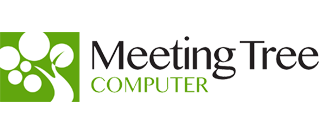The evolution of technology has left an indelible mark on how we work. From streamlined communication to increased productivity, the modern workplace has been dramatically transformed by the advent of new technologies.
In this blog post, we’ll delve into ten significant ways technology has revolutionized the modern workplace and discuss strategies for businesses to keep their workforce up-to-date with these rapid changes.
Communication Overhaul:
The days of relying solely on emails for communication are long gone. With the rise of messaging apps, video conferencing tools, and collaborative platforms like Slack and Microsoft Teams, communication within teams and across organizations has become more efficient and instantaneous.
Remote Work Revolution:
The COVID-19 pandemic accelerated the shift towards remote work, but it was technology that made it feasible. Cloud computing, virtual private networks (VPNs), and project management tools enable employees to work from anywhere while staying seamlessly connected.
Flexible Work Hours:
Technology has enabled flexible work hours through tools that allow employees to track their tasks and productivity. This shift promotes a healthier work-life balance, enhancing job satisfaction and overall well-being.
Automation and AI:
Tedious, repetitive tasks are being automated through artificial intelligence and machine learning, freeing human resources for more creative and strategic work, reducing errors, and increasing efficiency.
Data-Driven Decision-Making:
Modern workplaces are leveraging data analytics to make informed decisions. Tools that collect and analyze data provide valuable insights into employee performance, customer behavior, and market trends.
Enhanced Collaboration:
Collaborative technologies like Google Workspace (formerly G Suite), Microsoft Office 365, and cloud-based storage solutions facilitate real-time collaboration on documents, spreadsheets, and presentations, regardless of geographical location.
Personalized Learning and Development:
Technology has revolutionized employee training and development. Online courses, webinars, and e-learning platforms offer employees the opportunity to upskill and stay relevant in their fields.
Virtual Reality (VR) and Augmented Reality (AR):
Industries such as manufacturing, healthcare, and training are adopting VR and AR technologies for simulations, training, and remote assistance, improving learning outcomes and minimizing risks.
Cybersecurity Measures:
As technology advances, so do cyber threats. To counter this, the modern workplace has embraced advanced cybersecurity measures, including encryption, multi-factor authentication, and security training to protect sensitive data.
Employee Well-being Tech:
Various apps and wearables are designed to monitor and promote employee well-being. These tools encourage physical activity, track stress levels, and remind individuals to take breaks, ultimately boosting health and productivity.
Remain Competitive by Staying Current with Evolving Technologies
Adapting to these technological changes is crucial for businesses to remain competitive in today’s fast-paced environment. Embracing these changes, however, requires more than just adopting new tools; it demands a holistic approach that resonates with your workforce. Cultivating a workplace culture that celebrates continuous learning and adaptation is pivotal. Encourage your employees to explore new technologies and provide them with the resources and training they need to thrive in this tech-infused era.
Here are four strategies to ensure your workforce stays current:
Tech-Focused Onboarding:
Incorporate technology training into employee onboarding processes. By ensuring that every new team member is well-versed in the tools that drive your business, you’re building a foundation for seamless collaboration and innovation.
Feedback and Flexibility:
Encourage employees to provide feedback on the technology tools they use. Listening to your employees’ input and remaining flexible will pay dividends. The collaborative insights from your team can guide your technology choices, ensuring that the tools you adopt align with their needs and optimize their workflows.
Cross-Generational Collaboration:
Facilitate Collaboration between different generations within your workforce. Encourage cross-generational collaboration, where the enthusiasm of younger employees for emerging technologies blends with the wisdom of your experienced team members. This fusion facilitates knowledge exchange and drives innovation that caters to traditional and cutting-edge approaches.
Regular Technology Assessments:
Conduct periodic assessments of the technology stack your organization uses. Stay vigilant in identifying outdated tools and systems, and seize the opportunity to explore new solutions that align with your business goals. Remember, technology is not static—it’s a dynamic force that evolves alongside your business.
The impact of technology on the modern workplace is undeniable. From communication and collaboration enhancements to the integration of automation and AI, technology has revolutionized the way we work. Business owners have the privilege of steering their organizations through these changes, creating environments where technology enriches the work experience rather than complicates it. By fostering a learning culture, embracing feedback, and nurturing cross-generational collaboration, you can navigate the intricate path of technological evolution, remain competitive, and foster a dynamic work environment.
Take your business to the next level with technology solutions by Meeting Tree Computer.

